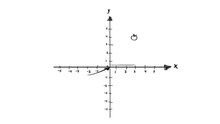Flat figure film
A film of flat figures (also known as laying trick , cut-out animation or sliding trick ) describes an animation technique in which flat figures, pictures or paper templates that have been cut out are moved on a background, thereby creating the animation. The background is usually drawn or painted and the event is accompanied by a speaker. Often stop-motion animations or little moving scenes used.
The flat figures usually have body parts that can be moved, so that an animation skeleton is built up, just like with rigging . The technology is also used in combination with non-animation films, for example to explain facts in a documentary or an educational video or to better address children. The movements usually consist of a few trick elements and are kept simple. The most famous flat figure is the jumping jack . The aesthetics of the technology can also be simulated artificially on the computer using special software .
advantages and disadvantages
In contrast to other animation techniques, this form can also be carried out alone and at less cost and more quickly. Individual objects can be made by handicrafts yourself . However, this animation technique is also limited and movements and emotions in the form of facial expressions and gestures can only be represented to a limited extent.
Examples
The Italian Quirino Cristiani made numerous flat-figure films from 1916, including El Apóstol, the first full-length animated film from 1917, which, however, has been considered lost since a film studio fire in 1926.
From 1919 Lotte Reiniger created the first film works using silhouette animation technology in Germany . Reiniger's first full-length silhouette animation film was published in 1926 with The Adventures of Prince Achmed .
Web links
- Laying trick in the Lexicon of Film Terms of the University of Kiel
literature
- Andreas Friedrich: Film genres: Animated film: Reclam Filmgenres, Reclam-Verlag , 2012, ISBN 9783159601243
- Hans Dieter Erlinger: Handbook of children's television, UVK media, 1998, ISBN 9783896692467
- Kerstin Esser: Movement in cartoon film: a comparative analysis of public-law cartoon co-productions for German children's television with special consideration of aesthetic and historical aspects, Lang, 1997, ISBN 9783631309803
- Rolf Giesen: Lexicon of animated and animated films: from Aladdin, Akira and Sindbad to Shrek, Spider-Man and South Park: films and characters, series and artists, studios and technology - the big world of animated films: characters, puppets -, silhouette and laying trick, stop motion, mixed films and 3D computer animation, Schwarzkopf & Schwarzkopf, 2003, ISBN 9783896025234
Individual evidence
- ↑ a b Sabine Heller: Character animation in film and television: Analysis and development of two- and three-dimensional characters . GRIN Verlag, 2009, ISBN 978-3-640-39082-3 ( google.se [accessed January 24, 2019]).
- ^ German Youth Institute: Handbook Media Education in Kindergarten: Part 1: Pedagogical Basics . Springer-Verlag, 2013, ISBN 978-3-322-93640-0 ( google.se [accessed January 24, 2019]).
